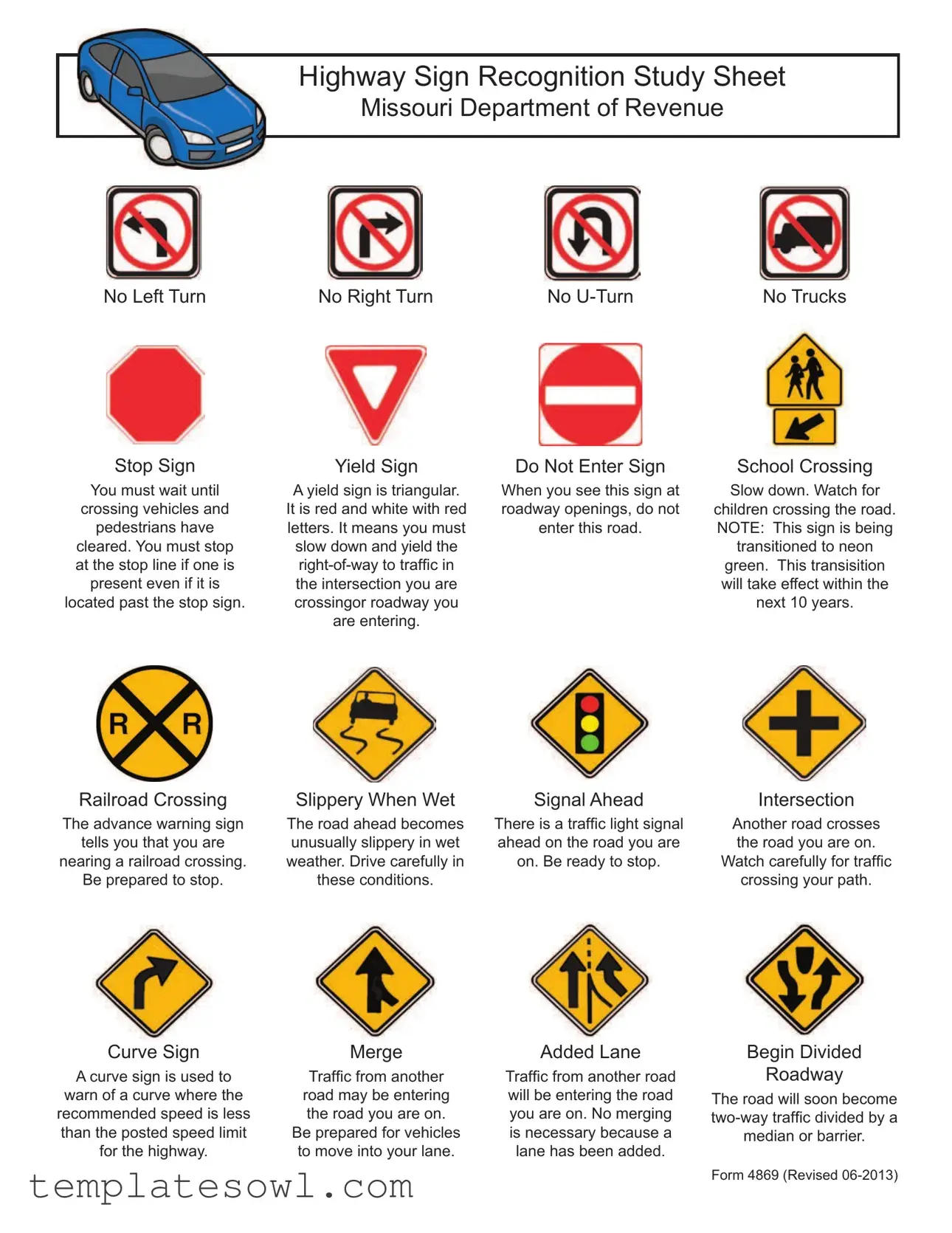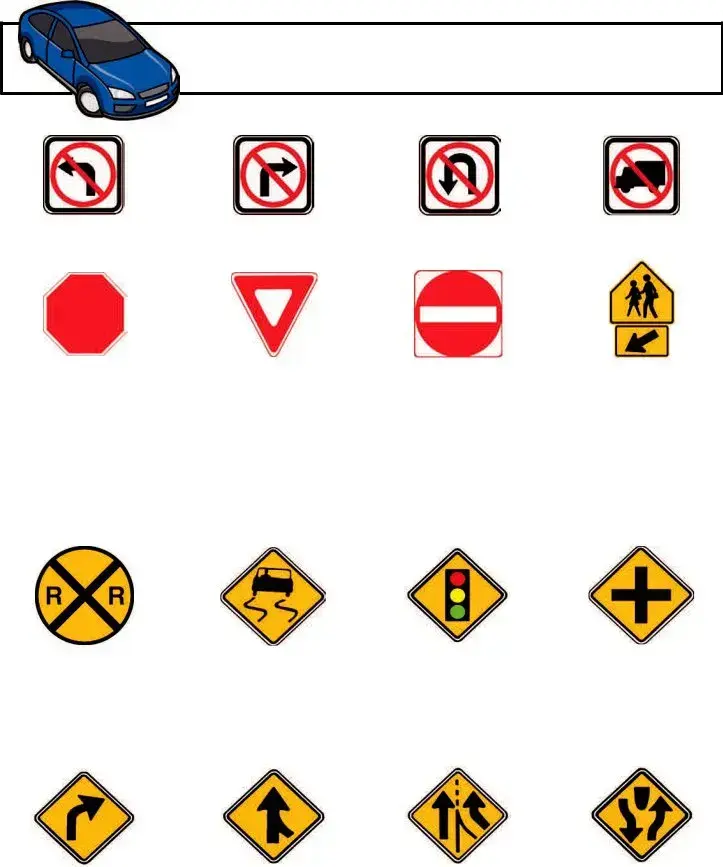What is the purpose of the Road Sign Test in Missouri?
The Road Sign Test in Missouri is designed to evaluate a driver’s understanding of various traffic signs and signals. This knowledge is essential for ensuring the safety of all road users. Understanding these signs helps prevent accidents and promotes operating compliance with traffic laws.
What types of signs will be covered on the test?
The test includes recognition of several key traffic signs, such as the Stop Sign, Yield Sign, and various warning signs like the No Left Turn and Railroad Crossing signs. Additional signs may include Curve signs, School Crossing signs, and signage indicating merging traffic. Each sign serves to inform drivers of regulations and potential hazards.
How can a person best prepare for the Road Sign Test?
Preparation can be effective through study and practice. Reviewing the Highway Sign Recognition Study Sheet provided by the Missouri Department of Revenue is highly recommended. Taking practice tests and learning about common road signs will also enhance retention and understanding.
What should one do if they fail the test?
If the test is not passed, individuals can retake it. It is advisable to allow for some study time in between attempts to ensure better chances of success. Understanding the material and becoming familiar with the signs may help improve performance on future attempts.
Are there any specific signs to focus on while studying?
Focus should be given to common signs like Stop, Yield, and No Turn signs as well as warning signs indicating school zones or railroad crossings. Familiarizing oneself with the meanings of traffic signals and their importance is critical as these are frequently encountered on the road.
Is there a fee associated with taking the Road Sign Test?
Typically, there is a fee for taking the Road Sign Test, as is the case with most driving-related tests. It is best to check with the Missouri Department of Revenue or local licensing office for the most current fee structure and payment options.
How long is the Road Sign Test?
The duration of the Road Sign Test can vary, but it typically takes no more than 30 minutes to complete. Ensuring that study materials are well understood can lead to a quicker and more efficient testing experience.
Can a person take the test online?
In some cases, online testing options may be available. It is advisable to check the Missouri Department of Revenue website or contact them directly for the most current information on test availability and online options.
How often is the Road Sign Test updated?
The Road Sign Test may be updated periodically to reflect changes in traffic laws and signage. Staying informed about updates from the Missouri Department of Revenue is crucial for current information and effective preparation.
What is the importance of understanding yield signs?
Yield signs are crucial for indicating the need to slow down and give the right-of-way to other vehicles. Failing to yield properly can lead to accidents. Knowing how to respond to yield signs enhances overall road safety for everyone.

